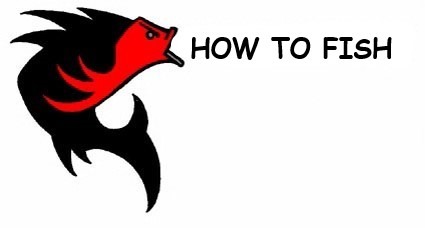Whiting are a slim, sleek, sandy coloured fish that hang in the shallow water in estuaries and bays…and they taste like HEAVEN!
…In fact they are so good that I know some anglers who target nothing else so they can eat like kings after every fishing session.
Whiting seem to be in largest numbers in summer. They gather together to spawn and when conditions are right you can haul in good numbers from the same spot. They still hang around in winter but the numbers aren’t as big when its cold.
Whiting are mainly bottom feeders and they like to search clear sandy patches for shellfish and other tasty bits. Your best baits are nippers or bass yabbies, sandworms, puppies and mussels. They also take fresh squid and fish bait…buy I’ve always had most luck with the other stuff. If you can use live bait, especially nippers, you’ll not only increase the numbers you’ll catch but often their size!
Whiting are pretty fussy at times. If you miss a bite make sure you put on a new bait. They don’t seem to like a bait chewed by someone else.
If you fish the estuary systems, especially sandy areas need weed, you don’t have to cast far out. The fish can be in shallow water right near the bank.
Unlike bream and other estuary and bay fish whiting don’t spend much time near vertical structure like bridge pylons, oyster racks and other man made stuff. They like holes and dips in the bottom.
When bait fishing – wind in the bait slowly every now and again. Twitching the bait also seems to improve strike rate. The whiting like moving bait. A light jig will often get them to hit it…like they think it’s trying to escape and don’t want to miss the chance for an easy meal.
Many people use size 6 or 4 long shanked hooks. I prefer size 8 as, even large, whiting have small mouths and a smaller hook is easier for them to swallow.
Many anglers add a small length of red tubing or red bead on the line next to the hook…it’s thought to help attract the fish. I have tried fishing with and without the tubing and haven’t really noticed any difference.
Many people use standard ball sinkers as weight but I always go with a running berley cage of 15g to 40g depending on conditions. I use sandy coloured cages mostly….but even the black ones still bring the fish in – the colour doesn’t seem to spook them!
Whiting can be found in estuaries, bay and surf beaches but I have always had more luck in the bay beaches.
They like the sandy areas in between weed and rock….and you don’t have to go deep. I’ve caught them within easy cast of shallow beaches like Dromana on the Mornington Peninsula, Point Leo on Westernport and at Apollo Bay. The water, at times, was less than a metre deep but the whiting were there. If you fish from a pier or can access deeper water you on’t need to go beyond 5 to 6 metres.
You can also get them in the surf, especially on beaches that have plenty of pippies and sandworms in at the waters edge.
When checking your fishing spot, look for holes, sandy gutters and dips in the bottom…anywhere that bait might be washed into …or try to hide.
Whiting fight well for their size but ‘cos they don’t grow big you don’t need heavy gear…and lighter gear always makes the fight seem harder and more fun!
You don’t need a long rod, even in the surf, because the whiting are often in close. A 2.1m to 2.5m rod is fine….and it really helps to have a sensitive tip to feel this light bites and nips.
Use 2 – 3 kg line on a 2500series reel and that’s enough to pull in the biggest whiting. You’ll improve your chances of a hook-up with a fluorocarbon leader tied to braid or monofilament line. The fluorocarbon is almost invisible in water and this helps when its crystal clear.
I’ve always found whiting to bite best when the waters moving well. Incoming or outgoing tide are both good ….so it gives you a few more choices having both sides of the tide.
I’ve never used lures on whiting but a ‘lure only’ mate of mine does very well with different types. He always starts with small hard bodied lures and moves onto poppers and finally tries soft plastics. He keeps them small and mixes up the retrieve. Twitches, lifts, stops and slow retrieve will all catch fish at times.
Stick baits, fish tails, paddle tails and grubs are all good options…and start with small lures first.
King George Whiting are a great all round fish for sport and taste. They’re worth targeting with the right bait and gear and if you do manage to get a few….you’ll have a ball catching and eating!
